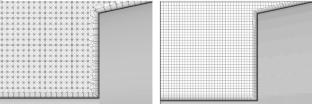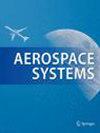Analysis of computational schemes for calculating gradient of fluid dynamic quantities on various grids
Abstract
The paper examines computational schemes for calculating the gradient of fluid dynamic quantities using grids of various types. The Green–Gauss method and the least squares method (LSM) used to develop a hybrid gradient calculation scheme are considered. It is demonstrated that the accuracy of gradient calculations may vary depending on the geometry of the control volume: the Green–Gauss method exhibits lower errors for strongly elongated thin cells and cells with curved edges, while for cells with orthogonal edges, it is preferable to use LSM. In order to improve the accuracy of calculations on unstructured grids, a hybrid gradient calculation scheme is proposed. This scheme computes the gradient by summing values derived from both the Green–Gauss method and LSM, given the weight function that incorporates the geometry of the control volume. The paper presents a formula for the weight function, which determines the contribution of each method within the hybrid scheme. The developed scheme is applied to the problem of supersonic flow around a cylinder with a needle on two unstructured grids, namely truncated hexagons and tetrahedra. It is shown that the proposed hybrid scheme reduces the error in calculating the aerodynamic characteristics of a streamlined object.


 求助内容:
求助内容: 应助结果提醒方式:
应助结果提醒方式:


